Measuring Spatial and Temporal Gravelled Forest Road Degradation in the Boreal Forest
Abstract
1. Introduction
2. Materials and Methods
2.1. Study Area
2.2. Experimental Design
2.3. Observation of In Situ Degradation
2.4. Observed Forms of Degradation
2.5. Remote Detection of Degradation
2.6. Statistical Analyses
2.7. Candidate Model Selection
2.8. Predictions and Validation of Candidate Models
3. Results
3.1. Regression Models of Degradation
3.2. Selection of Candidate Models
Predictions and Validation of Candidate Models
4. Model Validation
5. Degradation Prediction Curves
6. Discussion
6.1. Model Performance in Predicting Degradation
6.2. Field Approach- Road Width
6.3. Field Approach- Slope
6.4. Field Approach- Time-Since-Last-Maintenance
6.5. PRSL
6.6. Remote Sensing Approach
6.7. Future Implications
7. Conclusions
Author Contributions
Funding
Institutional Review Board Statement
Data Availability Statement
Acknowledgments
Conflicts of Interest
References
- Bourgeois, L.; Kneeshaw, D.; Boisseau, G. Les routes forestières au Québec: Les impacts environnementaux, sociaux et économiques. VertigO-La Rev. Électronique Sci. L’environnement 2005, 6, 1–12. [Google Scholar] [CrossRef]
- Caliskan, E. Environmental impacts of forest road construction on mountainous terrain. Iran. J. Environ. Health Sci. Eng. 2013, 10, 23. [Google Scholar] [CrossRef]
- Fahrig, L.; Rytwinski, T. Effects of roads on animal abundance: An empirical review and synthesis. Ecol. Soc. 2009, 14, 21. [Google Scholar] [CrossRef]
- Gucinski, H.; Furniss, M.J.; Ziemer, R.R.; Brookes, M.H. Forest Roads: A Synthesis of Scientific Information; USDA Forest Service; Pacific Northwest Research Station Portland: Portland, OR, USA, 2001; p. 103. [Google Scholar]
- Luce, C.H.; Wemple, B.C. Introduction to special issue on hydrologic and geomorphic effects of forest roads. Earth Surf. Process. Landf. 2001, 26, 111–113. [Google Scholar] [CrossRef]
- Ryan, T.; Phillips, H.; Ramsay, J.; Dempsey, J. Forest Road Manual: Guidelines for the Design, Construction and Management of Forest Roads; COFORD Dublin: Dublin, Ireland, 2004; p. 170. [Google Scholar]
- Robinson, C.; Duinker, P.; Beazley, K. A conceptual framework for understanding, assessing, and mitigating ecological effects of forest roads. Environ. Rev. 2010, 18, 61–86. [Google Scholar] [CrossRef]
- Akgul, M.; Akburak, S.; Yurtseven, H.; Akay, A.; Cigizoglu, H.; Demir, M.; Ozturk, T.; Eksi, M. Potential impacts of weather and traffic conditions on road surface performance in terms of forest operations continuity. Appl. Ecol. Environ. Res. 2019, 17, 2533–2550. [Google Scholar] [CrossRef]
- Kaakkurivaara, T.; Vuorimies, N.; Kolisoja, P.; Uusitalo, J. Applicability of portable tools in assessing the bearing capacity of forest roads. Silva Fenn. 2015, 49, 2–25. [Google Scholar] [CrossRef]
- Ciampoli, L.B.; Tosti, F.; Economou, N.; Benedetto, F. Signal processing of GPR data for road surveys. Geosciences 2019, 9, 96. [Google Scholar] [CrossRef]
- Salvi, R.; Ramdasi, A.; Kolekar, Y.A.; Bhandarkar, L.V. Use of Ground-Penetrating Radar (GPR) as an Effective Tool in Assessing Pavements—A Review. Geotech. Transp. Infrastruct. 2019, 29, 85–95. [Google Scholar]
- McFarlane, H.; Paterson, W.; Dohaney, W. Experience with the Benkelman Beam on Canadian Forest Roads; Transportation Research Board: Washington, DC, USA, 1975; Volume 16, p. 210. [Google Scholar]
- Thompson, M. Soil-Lime Mixtures for Construction of Fine-Grained Soil Pavements; 0360-859X; The National Academies of Sciences, Engineering, and Medicine: Washington, DC, USA, 1975. [Google Scholar]
- Karim, D.F.; Rubasi, D.K.A.H.; Saleh, D.A.A. The road pavement condition index (PCI) evaluation and maintenance: A case study of Yemen. Organ. Technol. Manag. Constr. Int. J. 2016, 8, 1446–1455. [Google Scholar] [CrossRef]
- Loprencipe, G.; Pantuso, A. A specified procedure for distress identification and assessment for urban road surfaces based on PCI. Coatings 2017, 7, 65. [Google Scholar] [CrossRef]
- Setyawan, A.; Nainggolan, J.; Budiarto, A. Predicting the remaining service life of road using pavement condition index. Procedia Eng. 2015, 125, 417–423. [Google Scholar] [CrossRef]
- Paterson, W. International Roughness Index: Relationship to Other Measures of Roughness and Riding Quality. In Proceedings of the Transportation Research Record, Washington, DC, USA; 1986; pp. 49–59. Available online: http://onlinepubs.trb.org/Onlinepubs/trr/1986/1084/1084-007.pdf (accessed on 5 October 2021).
- Abulizi, N.; Kawamura, A.; Tomiyama, K.; Fujita, S. Measuring and evaluating of road roughness conditions with a compact road profiler and ArcGIS. J. Traffic Transp. Eng. Engl. Ed. 2016, 3, 398–411. [Google Scholar] [CrossRef]
- Forslöf, L.; Jones, H. Roadroid: Continuous road condition monitoring with smart phones. J. Civ. Eng. Archit. 2015, 9, 485–496. [Google Scholar] [CrossRef]
- Múčka, P. Current approaches to quantify the longitudinal road roughness. Int. J. Pavement Eng. 2016, 17, 659–679. [Google Scholar] [CrossRef]
- Prasad, J.R.; Kanuganti, S.; Bhanegaonkar, P.N.; Sarkar, A.K.; Arkatkar, S. Development of relationship between roughness (IRI) and visible surface distresses: A study on PMGSY roads. Procedia-Soc. Behav. Sci. 2013, 104, 322–331. [Google Scholar] [CrossRef][Green Version]
- Sayers, M.W. On the Calculation of International Roughness Index from Longitudinal Road Profile; The National Academies of Sciences, Engineering, and Medicine: Washington, DC, USA, 1995; pp. 1–12. [Google Scholar]
- Akgul, M.; Yurtseven, H.; Akburak, S.; Demir, M.; Cigizoglu, H.K.; Ozturk, T.; Eksi, M.; Akay, A.O. Short term monitoring of forest road pavement degradation using terrestrial laser scanning. Measurement 2017, 103, 283–293. [Google Scholar] [CrossRef]
- Zhang, C. An UAV-based photogrammetric mapping system for road condition assessment. Int. Arch. Photogramm. Remote Sens. Spatial Inf. Sci 2008, 37, 627–632. [Google Scholar]
- Hyyppä, J.; Pyysalo, U.; Hyyppä, H.; Samberg, A. Elevation accuracy of laser scanning-derived digital terrain and target models in forest environment. In Proceedings of the EARSeL-SIG-Workshop LIDAR, Dresden, Germany, 16–17 June 2000; pp. 16–17. Available online: http://eproceedings.uni-oldenburg.de/website/vol01%5F1/01%5F1%5Fhyyppae1%2Epdf (accessed on 12 August 2021).
- Blouin, J.; Berger, J. Guide de Reconnaissance des Types Écologiques de la Région Écologique 5b Coteaux du Réservoir Gouin; Ministère des Ressources Naturelles du Québec, Forêt Québec, Direction des Inventaires Forestiers, Division de la Classification écologique et Productivité des Stations: Québec, QC, Canada, 2001. [Google Scholar]
- Gosselin, J.; Berger, J.-P. Guide de Reconnaissance des Types Écologiques: Région Écologique 4b: Coteaux du Réservoir Cabonga: Région Écologique 4c: Collines du Moyen-Saint-Maurice; Ministère des Ressources Naturelles, Forêt Québec, Direction des Inventaires: Quebec, QC, Canada, 2002. [Google Scholar]
- Leboeuf, M. Arbres et Plantes Forestières du Québec et des Maritimes-Réédition; Éditions Michel Quintin: Montreal, QC, Canada, 2016. [Google Scholar]
- Ciobanu, V.; Alexandru, V.; Saceanu, S. Degradation Forms of Forest Gravel Road Roadways under Heavy Vehicles Used in Timber Transport. Agric. Food Eng. 2012, 5, 37. Available online: http://rs.unitbv.ro/BU2012/Series%20II/BULETIN%20II%20PDF/Ciobanu_V.pdf (accessed on 2 December 2021).
- Desautels, R.; Després, R.; Dufresne, F.; Gilbert, G.; Leblanc, S.; Méthot, L. Voirie forestière. In Manuel de Foresterie; Doucet, R., Côté, M., Eds.; Éditions Multimondes: Montréal, QC, Canada, 2009; pp. 1187–1244. [Google Scholar]
- Jetté, J.-P. Guide des Saines Pratiques Forestières Dans les Pentes du Québec; Gouvernement du Québec, Ministeère des Ressources Naturelles: Québec, QC, Canada, 1998. [Google Scholar]
- Fannin, R.J.; Lorbach, J. Guide to Forest Road Engineering in Moutainous Terrain; Food and Agricultural Organization: Rome, Italy, 2007; p. 38. [Google Scholar]
- Dittmer, M.; Johnson, A.A. Impacts of High-Intensity Rainstorms on Low-Volume Roads and Adjacent Land; The National Academies of Sciences, Engineering, and Medicine: Washington, DC, USA, 1975. [Google Scholar]
- Kiss, K.; Malinen, J.; Tokola, T. Forest road quality control using ALS data. Can. J. For. Res. 2015, 45, 1636–1642. [Google Scholar] [CrossRef]
- Weiss, A. Topographic position and landforms analysis. In Proceedings of the ESRI User Conference, San Diego, CA, USA, 9–13 July 2001. [Google Scholar]
- Beven, K.J.; Kirkby, M.J. A physically based, variable contributing area model of basin hydrology/Un modèle à base physique de zone d’appel variable de l’hydrologie du bassin versant. Hydrol. Sci. J. 1979, 24, 43–69. [Google Scholar] [CrossRef]
- Riley, S.J.; DeGloria, S.D.; Elliot, R. Index that quantifies topographic heterogeneity. Intermt. J. Sci. 1999, 5, 23–27. [Google Scholar]
- Tarpley, J.D.; Schneider, S.R.; Money, R.L. Global Vegetation Indices from the NOAA-7 Meteorological Satellite. J. Clim. Appl. Meteorol. 1984, 23, 491–494. [Google Scholar] [CrossRef]
- Ferrari, S.; Cribari-Neto, F. Beta regression for modelling rates and proportions. J. Appl. Stat. 2004, 31, 799–815. [Google Scholar] [CrossRef]
- Smithson, M.; Verkuilen, J. A better lemon squeezer? Maximum-likelihood regression with beta-distributed dependent variables. Psychol. Methods 2006, 11, 54. [Google Scholar] [CrossRef]
- Cribari-Neto, F.; Zeileis, A. Beta regression in R. J. Stat. Softw. 2010, 34, 1–24. [Google Scholar] [CrossRef]
- Barton, K.; Barton, M.K. Package ‘Mumin’; Version 1.43.17; 2015. Available online: https://cran.r-project.org/web/packages/MuMIn/MuMIn.pdf (accessed on 23 December 2021).
- R Development Core Team. R: A Language and Environment for Statistical Computing; R Foundation for Statistical Computing: Vienna, Austria, 2019. [Google Scholar]
- Symonds, M.R.; Moussalli, A. A brief guide to model selection, multimodel inference and model averaging in behavioural ecology using Akaike’s information criterion. Behav. Ecol. Sociobiol. 2011, 65, 13–21. [Google Scholar] [CrossRef]
- Zeileis, A.; Cribari-Neto, F.; Gruen, B.; Kosmidis, I.; Simas, A.B.; Rocha, A.V.; Zeileis, M.A. Package ‘Betareg’; 2016. Available online: https://cran.r-project.org/web/packages/betareg/betareg.pdf (accessed on 23 December 2021).
- Walther, B.A.; Moore, J. The concepts of bias, precision and accuracy, and their use in testing the performance of species richness estimators, with a literature review of estimator performance. Ecography 2005, 28, 815–829. [Google Scholar] [CrossRef]
- George, K.; Rajagopal, A.; Lim, L. Models for Predicting Pavement Deterioration; The National Academies of Sciences, Engineering, and Medicine: Washington, DC, USA, 1989; pp. 1–7. [Google Scholar]
- Xu, G.; Bai, L.; Sun, Z. Pavement deterioration modeling and prediction for Kentucky interstate and highways. In Proceedings of the IIE Annual Conference, Montréal, QC, Canada, 31 May–3 June 2014; p. 993. [Google Scholar]
- Keramati, A.; Lu, P.; Sobhani, A.; Esmaeili, S.A.H. Impact of forest road maintenance policies on log transportation cost, routing, and carbon-emission trade-offs: Oregon case study. J. Transp. Eng. Part A Syst. 2020, 146, 4–28. [Google Scholar] [CrossRef]
- McFadden, D.; Talvitie, A.; Cosslett, S.; Hasan, I.; Johnson, M.; Reid, F.; Train, K. Demand Model Estimation and Validation; University of California: Berkeley, CA, USA, 1977. [Google Scholar]
- Heidari, M.J.; Najafi, A.; Alavi, S. Pavement deterioration modeling for forest roads based on logistic regression and artificial neural networks. Croat. J. For. Eng. J. Theory Appl. For. Eng. 2018, 39, 271–287. [Google Scholar]
- Kiss, K.; Malinen, J.; Tokola, T. Comparison of high and low density airborne lidar data for forest road quality assessment. In Proceedings of the ISPRS Annals of the Photogrammetry, Remote Sensing and Spatial Information Sciences, Prague, Czech Republic, 12–19 July 2016; pp. 167–172. Available online: https://www.researchgate.net/profile/Jukka-Malinen/publication/303845763_COMPARISON_OF_HIGH_AND_LOW_DENSITY_AIRBORNE_LIDAR_DATA_FOR_FOREST_ROAD_QUALITY_ASSESSMENT/links/57bd2ff508ae6c703bc530c2/COMPARISON-OF-HIGH-AND-LOW-DENSITY-AIRBORNE-LIDAR-DATA-FOR-FOREST-ROAD-QUALITY-ASSESSMENT.pdf (accessed on 28 December 2021).
- Government of Quebec. Guide D’application du Règlement sur L’aménagement Durable des Forêts du Domaine de L’état; Institution: Québec, QC, Canada, 2020; Available online: https://mffp.gouv.qc.ca/RADF/guide/ (accessed on 26 October 2021).
- Government of Alberta. Alberta Timber Harvest Planning and Operating Ground Rules Framework for Renewal; Institution: Calgary, AB, Canada, 2016; Available online: https://open.alberta.ca/dataset/9b063439-285b-4d38-b979-e3ae59c80d23/resource/28365bb7-9369-4f5a-8695-655a6ef0f6b3/download/2016-12-alberta-timber-harvest-planning-and-operating-groundrules-framework.pdf (accessed on 9 October 2021).
- Government of Yukon. Forest Resources Act: Standards and Guidelines—Forest Resources Roads; Institution: Whitehorse, YK, Canada, 2015. Available online: http://www.forestry.gov.yk.ca/ (accessed on 15 December 2021).
- Government of Manitoba. Forest Practices Guidebook: Forestry Road Management; Institution: Winnipeg, MB, Canada, 2012. Available online: https://www.gov.mb.ca/sd/forestry/pdf/practices/forestry_road_mgmt_2012.pdf (accessed on 23 December 2021).
- O’Mahony, M.; Ueberschaer, A.; Owende, P.; Ward, S. Bearing capacity of forest access roads built on peat soils. J. Terramech. 2000, 37, 127–138. [Google Scholar] [CrossRef]
- Adlinge, S.S.; Gupta, A. Pavement deterioration and its causes. Int. J. Innov. Res. Dev. 2013, 2, 437–450. [Google Scholar]
- Dobiaš, J. Forest road erosion. J. For. Sci. 2005, 51, 37–46. [Google Scholar] [CrossRef]
- Asbjornsen, H.; Goldsmith, G.R.; Alvarado-Barrientos, M.S.; Rebel, K.; Van Osch, F.P.; Rietkerk, M.; Chen, J.; Gotsch, S.; Tobon, C.; Geissert, D.R. Ecohydrological advances and applications in plant–water relations research: A review. J. Plant Ecol. 2011, 4, 3–22. [Google Scholar] [CrossRef]
- Aalto, J.; Le Roux, P.C.; Luoto, M. Vegetation mediates soil temperature and moisture in arctic-alpine environments. Arct. Antarct. Alp. Res. 2013, 45, 429–439. [Google Scholar] [CrossRef]
- Vaze, J.; Teng, J.; Spencer, G. Impact of DEM accuracy and resolution on topographic indices. Environ. Model. Softw. 2010, 25, 1086–1098. [Google Scholar] [CrossRef]
- Różycka, M.; Migoń, P.; Michniewicz, A. Topographic Wetness Index and Terrain Ruggedness Index in geomorphic characterisation of landslide terrains, on examples from the Sudetes, SW Poland. Z. Geomorphol. Suppl. Issues 2017, 61, 61–80. [Google Scholar] [CrossRef]
- Meneses-Tovar, C. NDVI as indicator of degradation. Unasylva 2011, 62, 39–46. [Google Scholar]
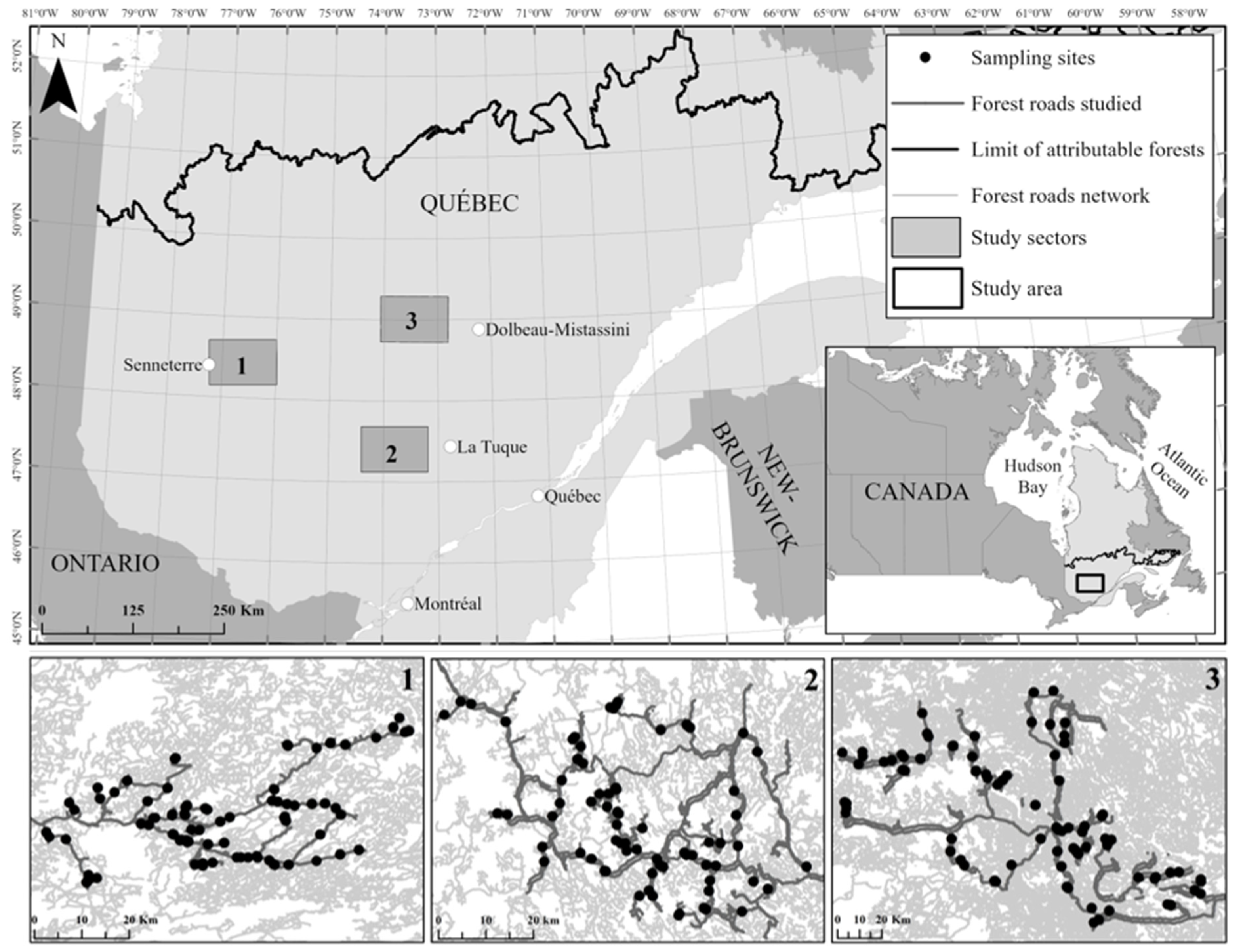
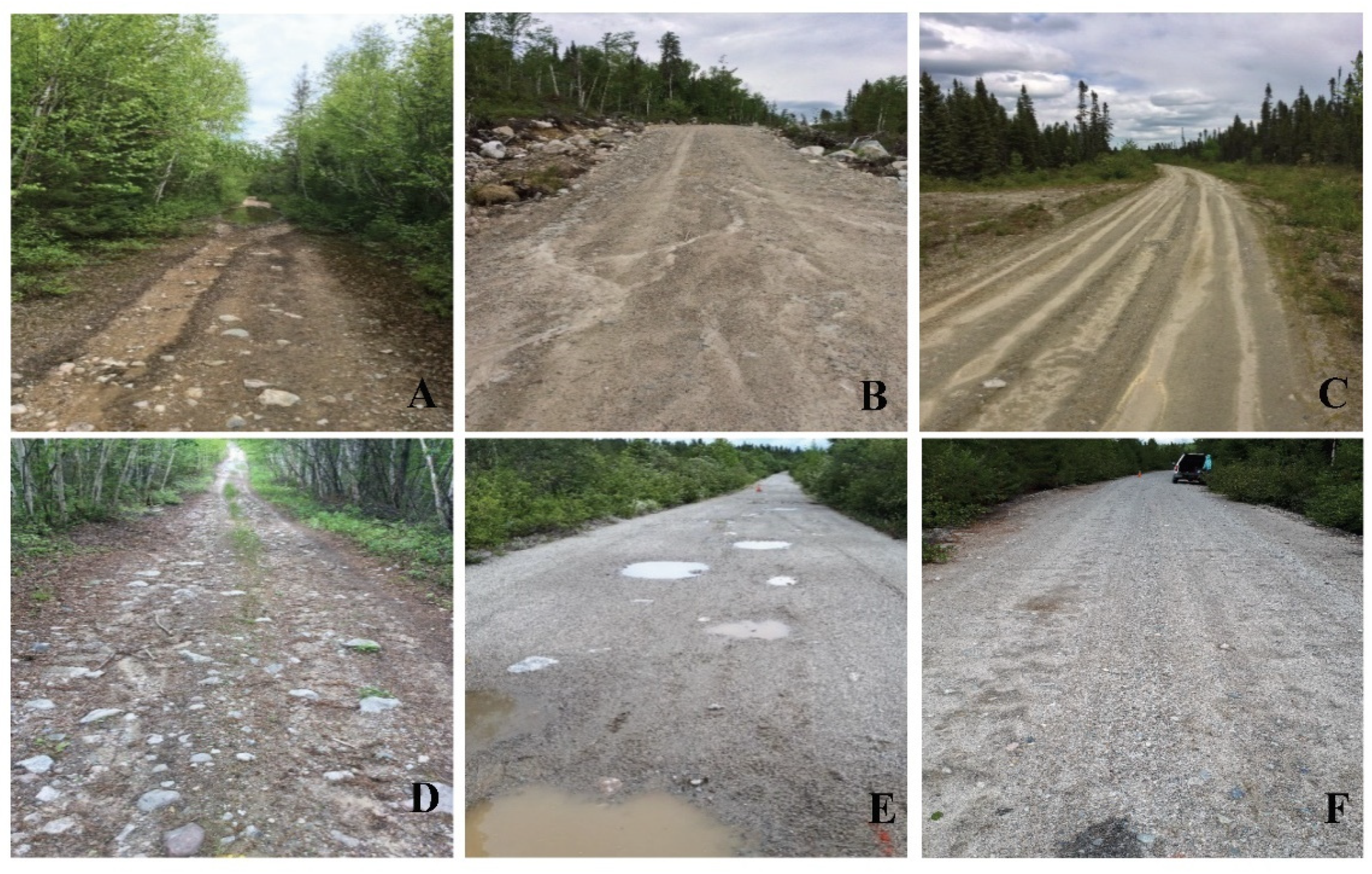
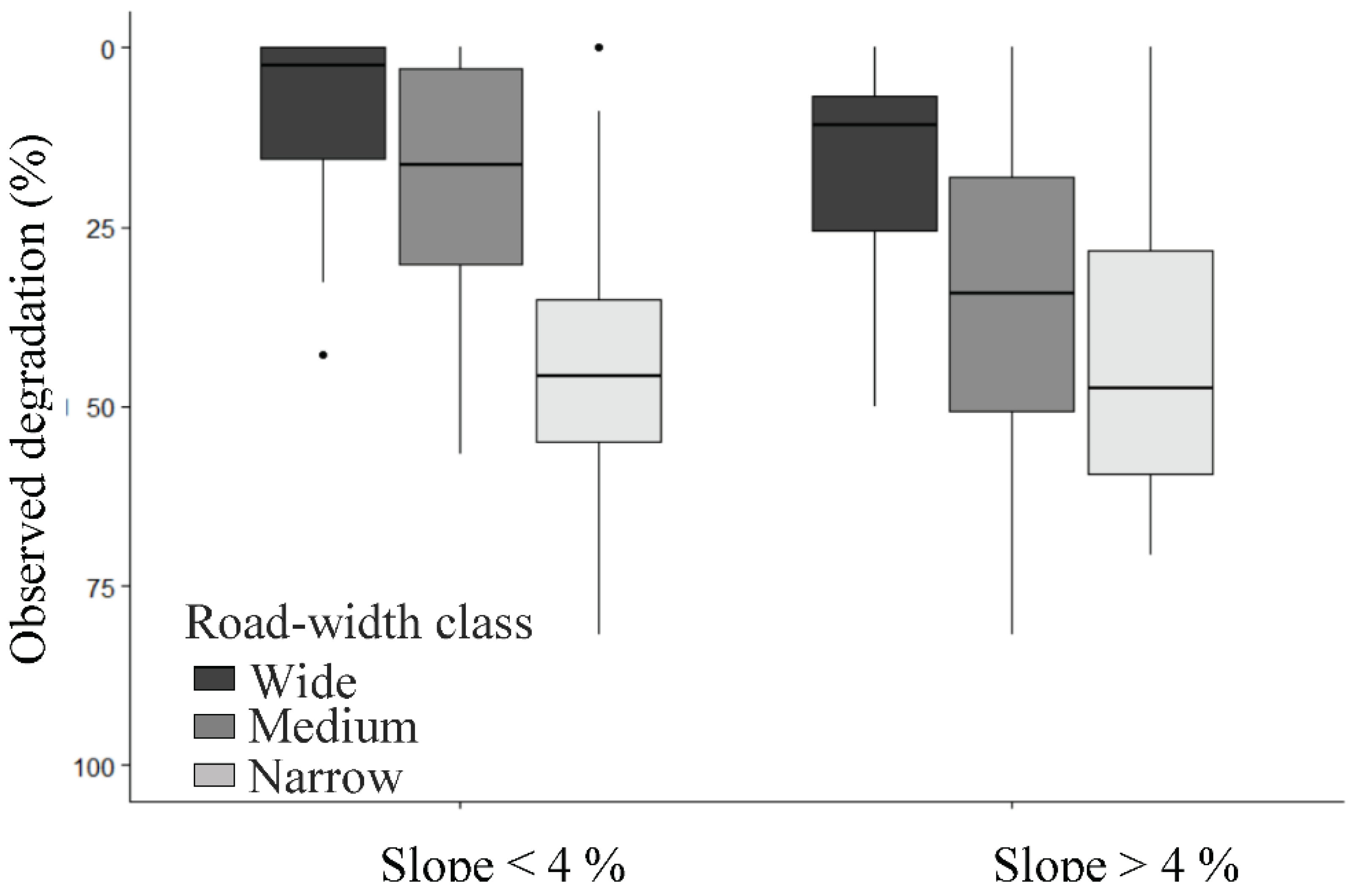
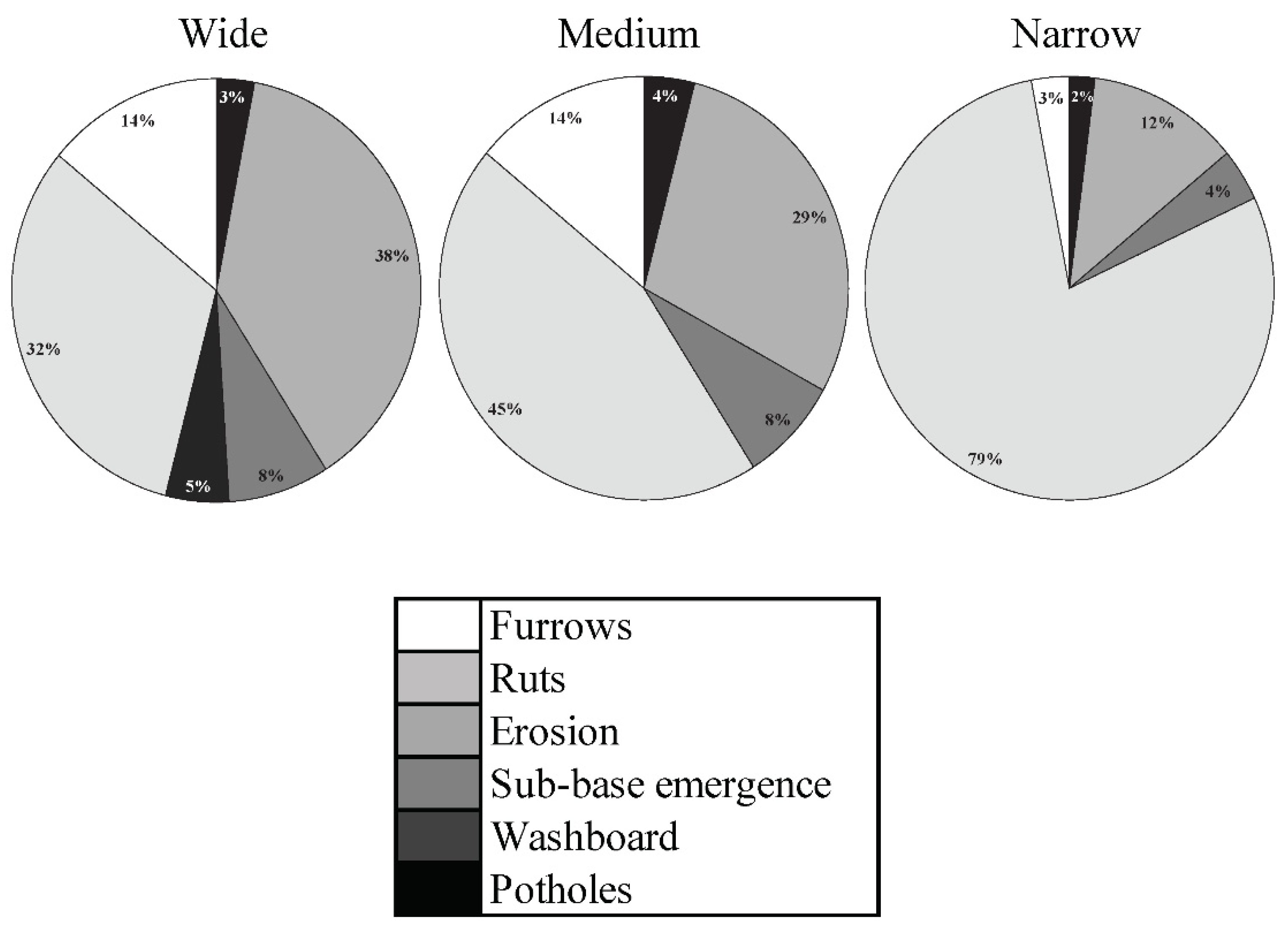
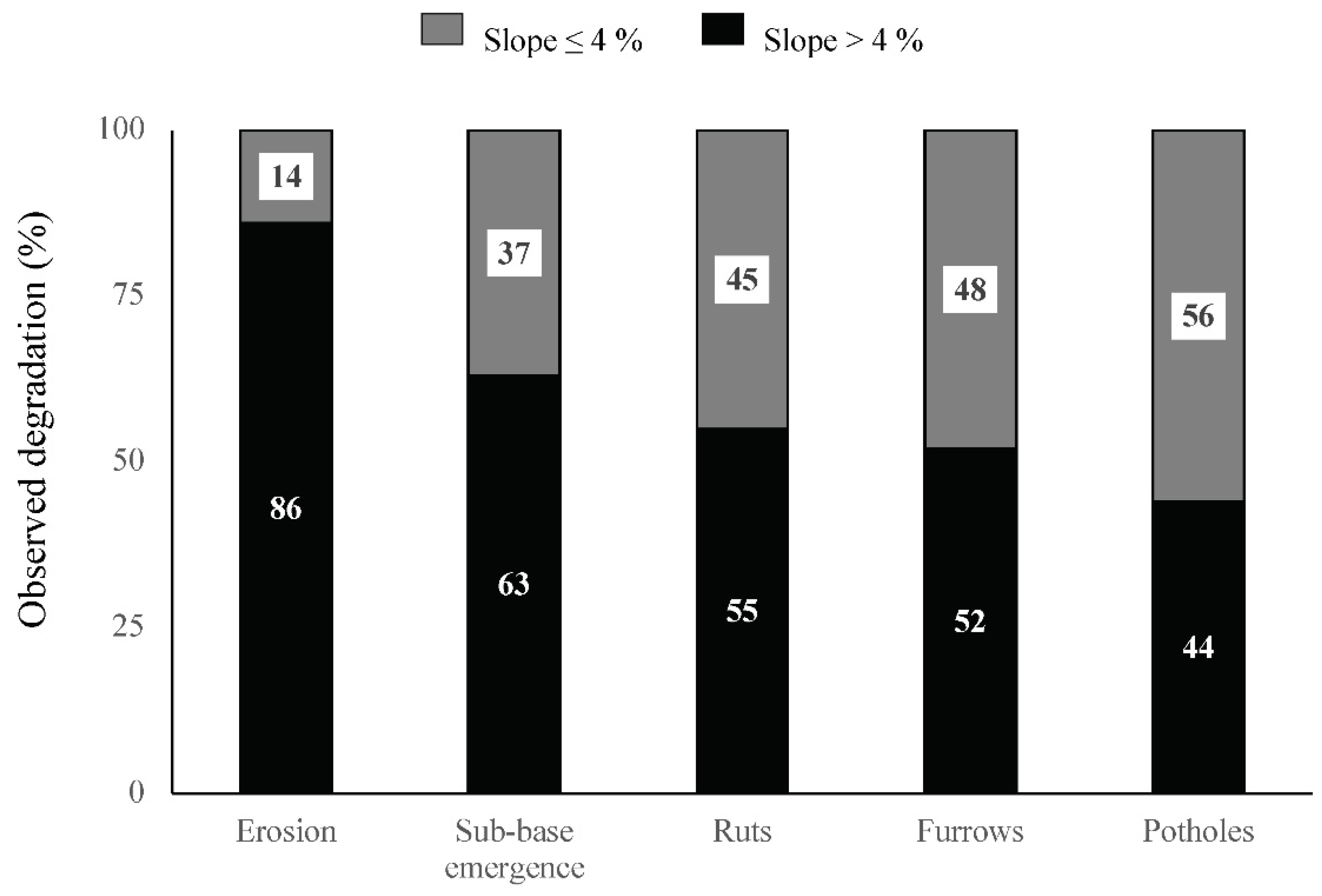


| Characteristics | FMU 1 | FMU 2 | FMU 3 |
|---|---|---|---|
| Cumulative road length sampled (km) in brackets number of plots. | 38 (75) | 34.5 (67) | 31 (66) |
| Minimum and maximum road elevation (m) | 318–483 | 364–527 | 282–579 |
| Mean elevation of sampled roads (m) | 393 | 430 | 407 |
| Mean annual temperature (°C) | 1.5 | 1.8 | 1.0 |
| Mean annual precipitation (mm) | 875 | 928 | 999 |
| Vegetation type | Abies balsamea—Betula papyrifera | Abies balsamea—Betula allegheniensis | Abies balsamea—Betula papyrifera |
| Indices | Description | |
|---|---|---|
| Topography | ||
| TPI | Topographic Position Index [35] | Measures the topographic difference of each central pixel as a function of the mean elevation of its neighbourhood. |
| TWI | Topographic Wetness Index [36] | Measures the number of neighbouring cells flowing into the central cell. Uses the local slope > 0 (in radians) to determine the direction and then the locations of flow accumulation. |
| Roughness | ||
| CSI | Surface Curvature Index | Generates longitudinal (parallel to slope) (CSIl), transverse (perpendicular to slope) (CSIt), and standard (association of the two curvatures) (CSIs) curvatures of a surface. |
| TRI | Terrain Roughness Index [37] | Measures terrain heterogeneity. Uses the minimum and maximum values of the neighbourhood of a central pixel to know elevation changes. |
| Vegetation | ||
| NDVI | Normalized Difference Vegetation Index [38] | Calculates the difference between reflectance of wavelengths that are emitted by sunlight in the near-infrared (NIR) and in the visible red band. |
| CHM | Canopy Height Model | Uses the first return of the point cloud acquired by ALS to generate a canopy height model. |
| Index | Statistics | r | Index | Statistics | r | ||||
|---|---|---|---|---|---|---|---|---|---|
| Topography | TPI | Minimum | −0.01 | Roughness | TRI | Minimum | 0.26 | *** | |
| Maximum | 0.17 | * | Maximum | 0.05 | |||||
| Mean | −0.15 | * | Mean | 0.32 | *** | ||||
| SD | 0.34 | *** | SD | 0.06 | |||||
| % Depress. | 0.36 | *** | Vegetation | NDVI | Minimum | 0.57 | *** | ||
| TWI | Minimum | −0.16 | * | Maximum | 0.49 | *** | |||
| Maximum | 0.04 | Mean | 0.55 | *** | |||||
| Moyenne | 0.07 | SD | −0.33 | *** | |||||
| SD | 0.41 | *** | MHC | Minimum | 0.20 | ** | |||
| Roughness | CSIs | Minimum | −0.09 | Maximum | 0.30 | *** | |||
| Maximum | 0.14 | . | Mean | 0.31 | *** | ||||
| Mean | −0.22 | ** | SD | 0.24 | *** | ||||
| SD | 0.41 | *** | % Depress. | 0.48 | *** | ||||
| % Depress. | 0.33 | *** | Variables | R | |||||
| CSIt | Minimum | −0.18 | ** | Field | Width | 0.56 | *** | ||
| Maximum | 0.24 | *** | Slope | 0.54 | *** | ||||
| Mean | −0.13 | Time since last maintenance | 0.15 | * | |||||
| SD | 0.49 | *** | PRSL | 0.59 | *** | ||||
| % Depress. | 0.24 | *** | |||||||
| CSIl | Minimum | −0.07 | |||||||
| Maximum | 0.03 | ||||||||
| Mean | 0.25 | *** | |||||||
| SD | 0.28 | *** | |||||||
| % Depress. | 0.43 | *** | |||||||
| Field Approach | |||||||||
|---|---|---|---|---|---|---|---|---|---|
| Model | Slope | Width | Time Since Last Maintenance | PRSL | AICc | ΔAICc | wi | ||
| 1 | −208.60 | 0.00 | 0.93 | ||||||
| 2 | −203.20 | 5.39 | 0.06 | ||||||
| 3 | −198.60 | 10.07 | 0.01 | ||||||
| Remote Sensing Approach | |||||||||
| Model | Mean NDVI | Mean TRI | % Depression TPI | % Vegetation CHM | SD CSIt | SD TWI | AICc | ΔAICc | wi |
| 1 | −179.60 | 0.00 | 0.28 | ||||||
| 2 | −177.50 | 2.14 | 0.09 | ||||||
| 3 | −177.50 | 2.14 | 0.09 | ||||||
| 4 | −177.50 | 2.17 | 0.09 | ||||||
| 5 | −177.30 | 2.34 | 0.09 | ||||||
| … | |||||||||
| 24 | −168.80 | 10.82 | 0.001 | ||||||
| 25 | −167.40 | 12.22 | 0.001 | ||||||
| Field Approach | ||
|---|---|---|
| Variable | Estimate | p-Value |
| Slope | 0.09 | <0.00001 |
| Width: Wide | −3.10 | <0.00001 |
| Width: Average | −2.80 | <0.00001 |
| Width: Narrow | −2.38 | <0.00001 |
| Time since last maintenance | 0.03 | <0.00001 |
| PRSL | 0.02 | <0.00001 |
| Remote Sensing Approach | ||
| Variable | Estimate | p-Value |
| (Intercept) | −4.09 | <0.00001 |
| Mean TRI | 3.43 | <0.00001 |
| Mean NDVI | 2.76 | <0.00001 |
| % depressions TPI | 0.02 | 0.0285 |
| Approach | Sample | SME | Over-Estimation | Under-Estimation | Variance | SMSE | Predicted Degradation | |
|---|---|---|---|---|---|---|---|---|
| Minimum | Maximum | |||||||
| Field | Development (75%) | 0.04 | 52% | 48% | 0.03 | 0.08 | 5.8% | 76.7% |
| Validation (25%) | 0.02 | 50% | 50% | 0.03 | 0.02 | |||
| Remote sensing | Development (75%) | 0.04 | 51% | 49% | 0.03 | 0.09 | 5.9% | 67.2% |
Publisher’s Note: MDPI stays neutral with regard to jurisdictional claims in published maps and institutional affiliations. |
© 2022 by the authors. Licensee MDPI, Basel, Switzerland. This article is an open access article distributed under the terms and conditions of the Creative Commons Attribution (CC BY) license (https://creativecommons.org/licenses/by/4.0/).
Share and Cite
Girardin, P.; Valeria, O.; Girard, F. Measuring Spatial and Temporal Gravelled Forest Road Degradation in the Boreal Forest. Remote Sens. 2022, 14, 457. https://doi.org/10.3390/rs14030457
Girardin P, Valeria O, Girard F. Measuring Spatial and Temporal Gravelled Forest Road Degradation in the Boreal Forest. Remote Sensing. 2022; 14(3):457. https://doi.org/10.3390/rs14030457
Chicago/Turabian StyleGirardin, Patricia, Osvaldo Valeria, and François Girard. 2022. "Measuring Spatial and Temporal Gravelled Forest Road Degradation in the Boreal Forest" Remote Sensing 14, no. 3: 457. https://doi.org/10.3390/rs14030457
APA StyleGirardin, P., Valeria, O., & Girard, F. (2022). Measuring Spatial and Temporal Gravelled Forest Road Degradation in the Boreal Forest. Remote Sensing, 14(3), 457. https://doi.org/10.3390/rs14030457







